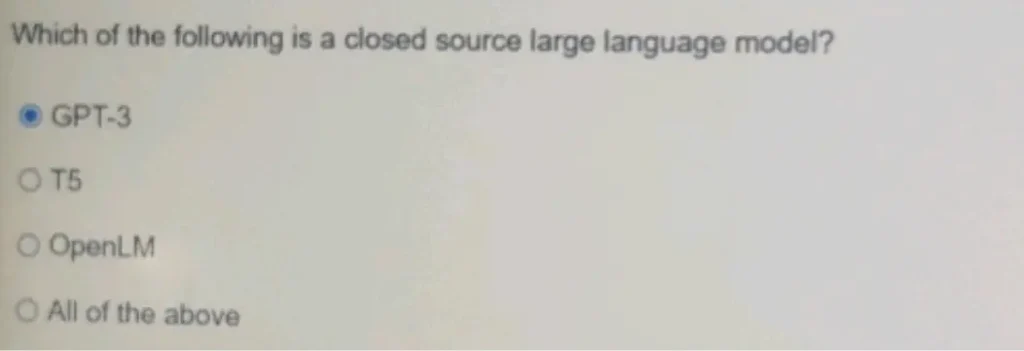Fdaytalk Homework Help: Questions and Answers: Which of the following is a closed source large language models?

a) GPT-3
b) T5
c) OpenLM
d) All of the above
Answer
First, let’s understand what is a “closed source” large language model means: A closed source model is one where the code, training data, and model weights are not publicly available.
To determine which of the given options is a closed-source large language model, let’s analyze each option step by step.
Given Options: Step by step Analysis
a) GPT-3
- GPT-3, developed by OpenAI, is a large language model known for its capabilities in natural language understanding and generation. GPT-3 is a closed-source model, which means its underlying code, model parameters and its training data are not publicly available.
b) T5 (Text-to-Text Transfer Transformer)
- T5, developed by Google Research, is an open-source large language model. Its code and pre-trained models are available to the public, allowing researchers and developers to use and modify it.
c) OpenLM
- OpenLM generally refers to models or initiatives that are open-source. If we consider this to be an open-source model (the name suggests open), it is not a closed-source large language model.
d) All of the above
- We’ll consider this if all other options seem correct.
Final Answer:
Based on the above analysis, the correct answer is:
Correct answer: GPT-3 (Option A)
Among the given options, the only one that correctly identifies as a closed-source large language model is GPT-3.
- GPT-3: Closed-source model.
- T5: Open-source model.
- OpenLM: Open-source model (name suggest open)
Learn More: Fdaytalk Homework Help
Q. True or False: Large Language Models are a subset of Foundation Models

